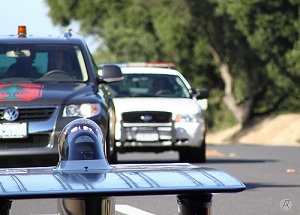The fastest solar car in the world?
 Last week there was a lot of buzz about Stanford Solar Car Project’s newly unveiled Xenith car. Someone claimed it was the world’s fastest solar car. The team’s played that down so far, because they haven’t tested its top speed yet.
Last week there was a lot of buzz about Stanford Solar Car Project’s newly unveiled Xenith car. Someone claimed it was the world’s fastest solar car. The team’s played that down so far, because they haven’t tested its top speed yet.
But it might be.
The team’s packing it up for the World Solar Challenge that’s being held in Australia from Oct. 16 to Oct. 23 where they’ll find out just how good the car is.
Last week, news sources like CNET ran headlines like “Stanford says it has the fastest solar car ever.” But the team isn’t that cocksure. In response to the headlines, they wrote a blogpost with the headline: “The Fastest Solar Car Ever? Hopefully…”
“There has indeed been controversy about whether this is the world's fastest solar car,” said Nathan Hall-Snyder, team leader and an engineering student at Stanford. “Currently, the record is held by the University of New South Wales. While we haven't yet found a runway to test it, based on the current numbers we're getting from our car, it might be possible to beat their record. I can say that we've matched the speed of Sunswift's car during testing.”
The Sunswift car, made by the University of New South Wales, currently holds the Guinness World Record for World’s Fastest Solar Powered Vehicle. Still, don’t expect to hear Sunswift screaming past like an F-1 machine.
First of all, it’s powered by a quiet electric motor, and secondly, it’s top unofficial speed is about 64 miles per hour, officially 54.7 mph.
But the car, like others designed for the 3,000 kilometer World Solar Challenge, are limited by the challenge’s requirements.
Those limitations include following speed limits, array size and safety requirements.
“Solar cars have had to obey speed limits and traffic rules for a number of years—the race officials tend to change the rules (allowable solar area) to limit the speed of the contestants to around 60 miles per hour,” Hall-Snyder said. “Any time that a solar car is traveling at the speed limit, it tends to limit the competitiveness of the race because no team can overtake a team traveling the speed limit by the race rules.”
Xenith is ready to take the challenge on, according to Hall-Snyder.
“We're using Sunpower C60 cells encapsulated with a very special glass, provided to us by our sponsor Corning,” he said. “While the cells themselves are the same efficiency and the solar area is the same, we've improved the solar power output of the car by 30 percent simply with the encapsulation.”
Stanford anticipates its top rivals in the competition will include the Michigan Solar Car Team, the Nuon Solar Team, the Tokai Solar Car Team and the Aurora Solar Car Team.
But Stanford thinks it can take the trophy home.
“The plan is to win—we've done our homework, and we believe that we've got a highly competitive car,” Hall-Snyder said. “I think we have the best chance of bringing home the trophy for the US that any American team has had in a long while.”
Image courtesy of the Stanford Solar Car Project.



